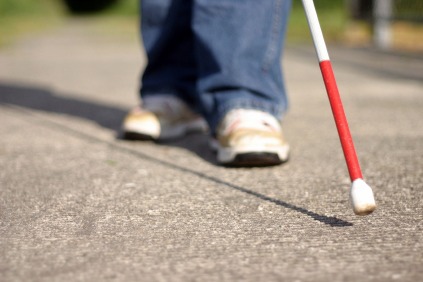
The Visually Impaired [Illustration by Shiju George]
A person is referred to as blind when he has a loss of vision or a field restriction so high that he or she cannot rely on sight for learning. Normally people with less than 20/20 vision are considered blind.
While working with people who are blind we should keep the following in mind:
- Provide opportunities for them to handle objects.
- Try and establish a routine and keep objects in the same place so that they may familiarise themselves with the location of various objects.
- Provide detailed verbal description whenever talking about anything. Include details such as texture, colour, size, weight, volume, distance etc. This helps them to formulate a complete picture.
- While referring to the blind, mobility is a major issue. Offer to guide them. Always let them take your arm/ hand (never grab them by the arm and try and lead them). Try and position yourself a little ahead of them and walk slower than your normal speed.
- Identify yourself and let them know when you are talking to them. Also let them know when you are leaving before you walk away.
- Keep in mind that a blind person’s perception on what things look like will be entirely different from that of a sighted person.

The Visually Impaired [Illustration by Shiju George]
Visual impairment in which there is not a total loss of field or visual acuity and sight can be used to some extent, would be termed as partially sighted. There are many kinds of partial sightedness, which may affect a person such as:
- Limited motion of the eyes.
- Inability to focus the eyes for a long period resulting in inaccurate perception.
- Damage to the optic nerve.
- Trembling eyeballs.
- Squint.While working with people who are partially sighted we should keep the following in mind:
- Use adaptive aids depending on the condition of the person.
- Give precise verbal directions and demonstrations to facilitate learning and understanding.
- Allow more time for completion of any task.
- Provide strong contrasts whenever showing things for better visibility.
- If working in a classroom situation place the student next to the teacher so that seeing and hearing all instructions is easier.
- Do not take for granted that the partially sighted may not need assistance in mobility. Always ask them if you can assist them and how you can do that.Always remember intelligence levels are not affected by visual impairment.










